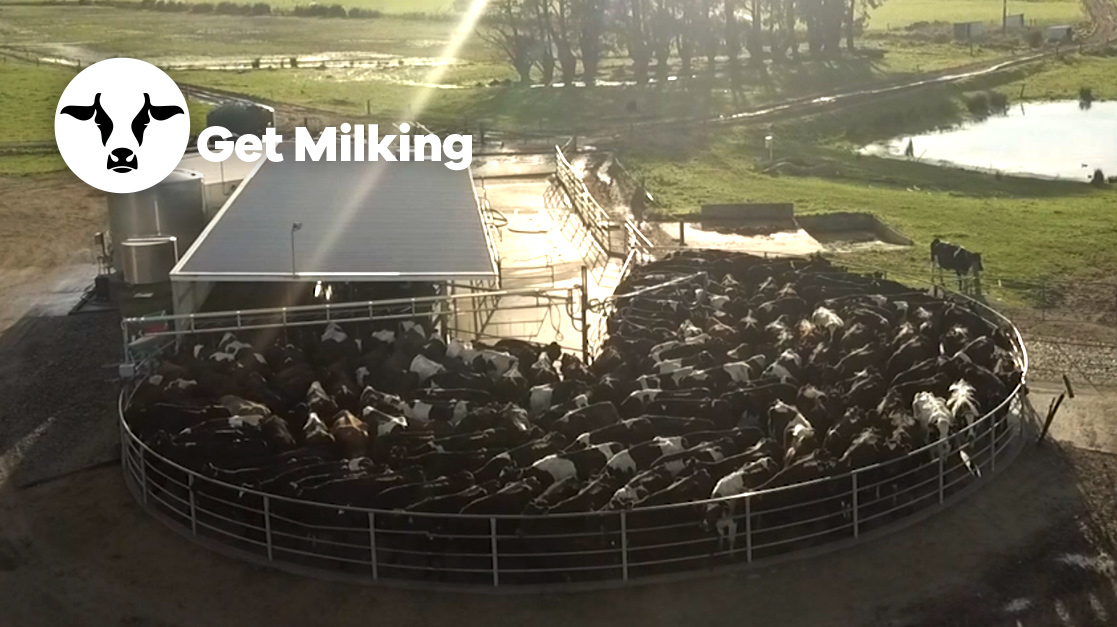The Relief Milker is responsible for helping the milking team to gather the milk from the cows, safely and hygienically, and keeping the milking environment clean.
Your goal, as a member of the Milk Harvesting team, is to help to ensure that the milk is gathered efficiently, that the cowshed is a safe, pleasant and stress-free environment for you and the animals, and that your observation skills help you to spot anything abnormal about the animals or the equipment in the shed.
A Relief Milker is a part-time role and is a great job that earns good money (as long as you can get out of bed early!). Watch Regan’s video to find out why it was a great job for him to have when he first started out.
If you are interested in a career you can progress from entry level roles to farm ownership. Farm roles vary, but general progression is as a Farm (Dairy) Assistant, an Assistant Herd Manager, Assistant Manager, Farm Manager (production manager), Operations Manager (larger farms and corporates), through to owning a farm – where there are lots of options as an equity manager, equity partner, sharemilker, or contract milker.
Outcomes
By completing this online training, you will be able to:
- Describe how cows see the world, how to deal with them kindly, knowledgeably and patiently, with the minimum of stress on you both
- Be able to observe cows, and report anything out of the ordinary in their behaviour
- Demonstrate the right way to cup and un-cup the cows when milking, when to remove the cups, and after care
- Practice hygiene – the milking shed is a health food factory, and must be kept to a high standard of cleanliness
- Discuss teamwork and the roles and responsibilities of everyone in the Milk Harvesting team
How to watch this training
There are over 25 short videos to watch.
Each video also has a pdf of information and tips on each topic, which you can open, save and print.
There’s a short self-assessed quiz at the end of each video and quiz answers are in the video or in the pdf – there are no trick questions! If you get one wrong, it’s okay, and you can have another go.
As the learning progresses from video to video, the first time around, you’ll need to watch them in the order they’re listed. Once all have been watched, you can then go back to any specific video at any time you like.
As part of our Work Wise portfolio, we’ve also added our Eat Wise and Money Wise videos (no quizzes). Understand how to read your payslip, the benefits of KiwiSaver, as well as what you’re entitled to for annual, sick and bereavement leave. Find out about nutrition for working on farm; carbs, sugar, fats, hydration and protein.
At the end of watching all the videos, you’ll receive a Certificate of Completion in your inbox – make sure you watch all of them from start to finish to get this.
The objectives of the course
People
By the end of this course, you will:
- Understand the processes involved in collecting the milk from the cow in a safe, efficient and hygienic way.
- Know how to work with your fellow teammates and how to ask for help when you need it.
Animals
By the end of this course, you will:
- Understand that the principles of good stock-handling are based on kindness, patience, and common sense.
- Know how to observe stock and take note of and report anything out of the ordinary in their behaviour.
Systems
By the end of this course, you will:
- Understand the basic processes in the two main types of milking shed used in Aotearoa-New Zealand, the rotary and the herringbone.
The Cowshed
By the end of this course, you will:
- Know the right way to cup the cows.
- Know how to remove the cups and check the udders.
- Know how to tell when a cow is milked out.
- Know how to spray the teats and use the backing gate.
- Know how to keep the shed and yard clean.

